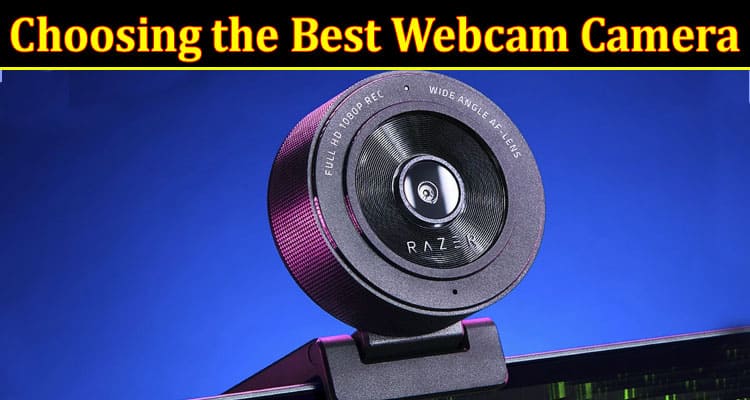In the modern world, video conferencing has taken on a crucial role in both personal and professional interactions. The need for high-quality webcam cameras has increased more than ever with the rise of remote work and virtual meetings. Choosing the ideal webcam camera can be challenging, especially with so wide varieties on the market. You may choose the best webcam camera by taking into account the following factors:
1. Image Quality
One of the most important things to take into account when picking a webcam camera is image quality. The level of information in the image is determined by the camera’s resolution, and the video’s frame rate affects how fluidly it will play. The resolution options for the best webcam camera are 720p or 1080p, with 1080p being the higher quality option. For seamless video playback, the frame rate must be at least 30 frames per second (fps).
2. Lens Quality
The image quality may also be impacted by the lens’s quality. Better lenses can capture more light, producing photos that are brighter and more detailed. Search for webcams with high-quality lenses composed of things like glass or plastic with several elements.
3. Field of View
The region that the webcam camera can capture is known as the field of view. While a narrower field of view might be adequate for one-on-one interactions, a broader field of view is suitable for group meetings or the development of content. For the best coverage, look for webcams with a field of view between 70 and 90 degrees.
4. Connectivity
The type of connectivity offered by the webcam camera is another important factor to consider. USB webcams are the most common type and are easy to set up and use. However, some webcams may offer additional connectivity options, such as Wi-Fi or Bluetooth. These options may be more convenient if you need to move the camera around frequently.
5. Compatibility
Make sure the webcam camera is compatible with your operating system and software. Most webcams are compatible with Windows, Mac, and Linux operating systems, but it’s always best to double-check. Furthermore, ensure that the camera is compatible with the software you plan to use, whether it’s Zoom, Skype, or another video conferencing tool.
6. Microphone Quality
The microphone quality can impact the audio quality of virtual meetings and online content creation. Look for webcams with built-in microphones, as they can save you the trouble of purchasing an external microphone. Ensure that the microphone quality is sufficient for your needs, with noise cancellation and clear audio.
7. Size and Design
The size and design of the webcam camera can impact its ease of use and portability. A compact and lightweight webcam is ideal for those who need to move it around frequently or take it on the go. Some webcams also offer adjustable mounts or stands, allowing you to adjust the angle and position of the camera.
8. Additional Features
Some webcams may offer additional features, such as autofocus, face tracking, or background removal. These features can enhance image quality and make virtual meetings or content creation more convenient. However, they may also increase the price of the camera, so consider whether these features are necessary for your needs.

